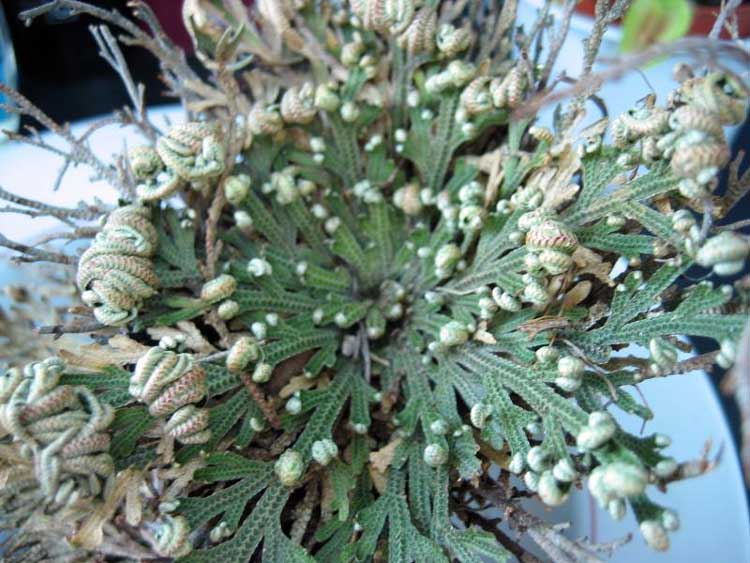Selaginella lepidophylla (*) Cladus: Eukaryota Name Selaginella lepidophylla, (Hook. & Grev.) Spring References USDA, NRCS. 2006. The PLANTS Database, 6 March 2006 (http://plants.usda.gov). Data compiled from various sources by Mark W. Skinner. National Plant Data Center, Baton Rouge, LA 70874-4490 USA. Vernacular names Selaginella lepidophylla (syn. Lycopodium lepidophyllum) is a species of desert plant in the spikemoss family (Selaginellaceae). S. lepidophylla is noted for its ability to survive almost complete desiccation; during dry weather in its native habitat, its stems curl into a tight ball and uncurl when exposed to moisture.[1] It is native to the Chihuahuan Desert. Common names for this plant include false rose of Jericho, rose of Jericho, resurrection plant, resurrection moss, dinosaur plant, siempre viva, stone flower, and doradilla. Selaginella lepidophylla is easily confused with Anastatica: both species are resurrection plants and form tumbleweeds, and they share the common name "rose of Jericho". This plant is sold as a novelty item as a bare root in its dry state. It can be revived with only a little water. After wetting, the plant turns green, hence the name "resurrection plant".[2] This use was common in the United States as early when the Spanish Friars entered the New World, including the area that was to become the United States. They used the plant to demonstrate to the Natives the concept of being reborn.
External links Selaginella lepidophylla www.eFloras.org
^ Lebkuecher, J. and W. Eckmeier (June 1993,). "Physiological Benefits of Stem Curling for Resurrection Plants in the Field". Ecology 74 (4): 1073–1080. doi:10.2307/1940477. Schenck, George. 1997. Moss Gardening. Portland: Timber Press
Source: Wikipedia, Wikispecies: All text is available under the terms of the GNU Free Documentation License |
|

